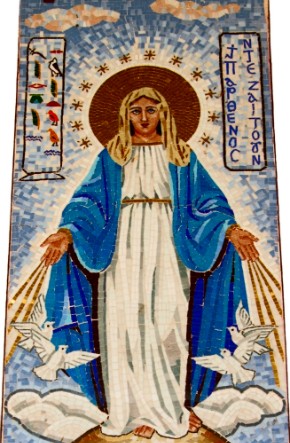Mary among the Egyptians

In many Catholic and Orthodox countries, the most visible face of faith is commonly the Virgin Mary (think of Mexico’s ubiquitous Virgin of Guadalupe). Surprisingly—and counterintuitively—Mary is scarcely less venerated in Egypt, an overwhelmingly Muslim country. Unless we pay attention to Mary, we miss large portions of the religious faith and practice of the most populous Arab nation. That fact complicates many assumptions about the inevitable hostility between Christianity and Islam.
Egypt’s Christian population is variously estimated at between 5 and 10 percent, anywhere from 5 to 9 million individuals, and most are members of the ancient Coptic Church. These believers have often suffered from violence and persecution, most notoriously during the upsurge of violence that followed the military overthrow of the Muslim Brotherhood regime in 2013. Many churches were attacked, and the continuing insurgency in the country raises grave fears about future pogroms.
Despite that uncertainty, Egypt’s Christians still thrive and maintain their ancient churches and shrines. Almost certainly, historic Christian devotion to the Virgin Mary began in Egypt, which is home to countless churches dedicated to her and icons celebrating her. Egyptians point proudly to many sites that the Holy Family reputedly visited during Jesus’ childhood, some of which are major centers for pilgrimage and religious tourism. The Orthodox Christmas Day (January 7) is a national public holiday, on a par with the familiar roster of Islamic celebrations.





